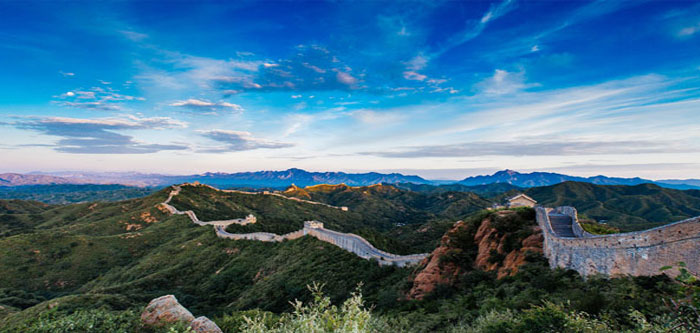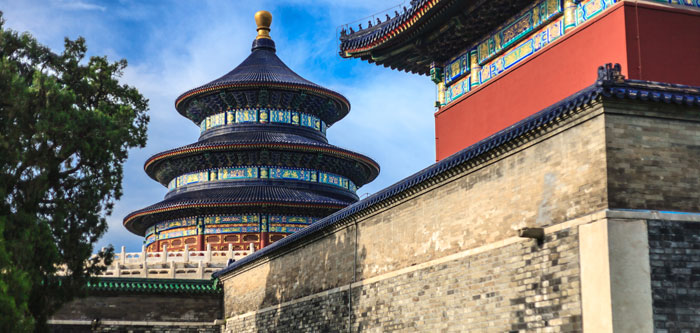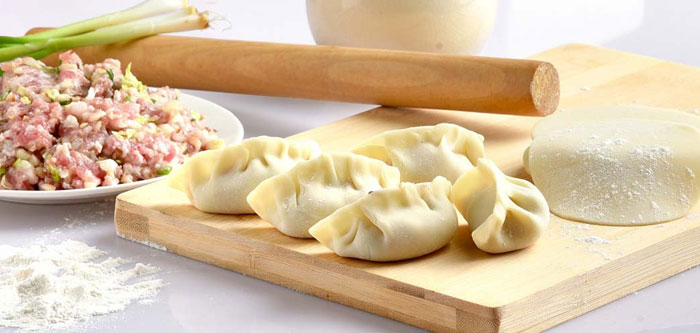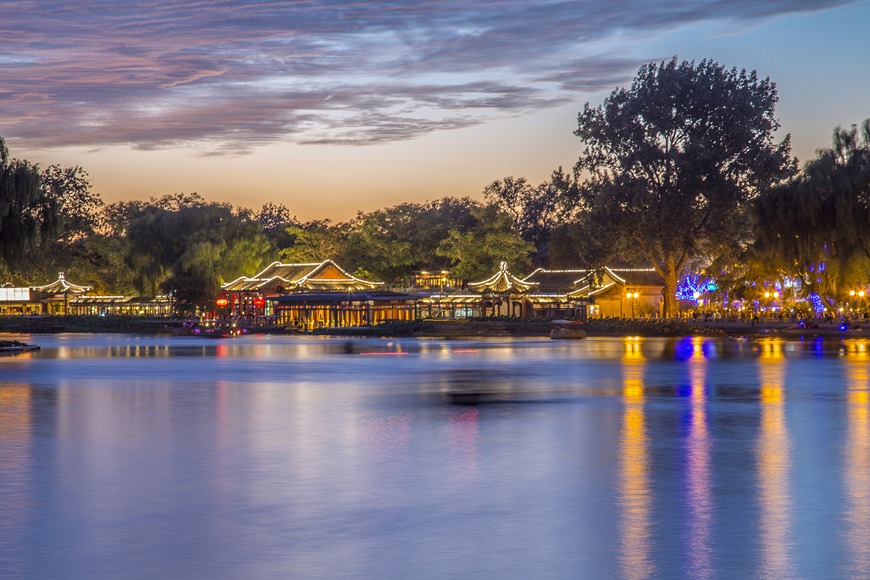
Beijing - An Ancient Capital You'll Never Find Boring
Compared with the low-key ancient city of Xi'an, Beijing is more like a confident young man who is proud of his incomparable central status, glorious culture and history, and notable attractions. The majestic Great Wall spans across North China for more than 20,000 kilometers while the Forbidden City shows the splendid wisdom of Chinese people and the luxurious royal lifestyle of the ancient Chinese emperors. As a political, economic, and cultural center, Beijing has become more and more popular among Chinese and foreign visitors. People arriving from different places gather there for all kinds of reasons, making this city even more colorful and charming. Welcome to Beijing!


Take a Stroll in Houhai—Enjoying Beijing's Nightlife
Beijing is an amazing city that it is not only fantastic in the daytime but is energetic at night. Houhai is a representative place for local people to enjoy the nightlife. There, they meet up and chat with friends. Houhai comprises Shichahai, Qianhai, and Xihai, and is located in the Xicheng District of Beijing. There are plenty of restaurants, tea shops, bars, and cafés. Lots of local people convene there in the evenings and it's also become an attractive area for foreign tourists.


Why is Beijing So Charming?
- You can witness the longest wall in the world—the Great Wall, which spans across Northern China for over 20,000 kilometers.
- Experience the largest and most luxurious imperial palace —the Forbidden City, which covers an area of 150,000 square meters.
- Explore the 800-year-old history of when it became the capital of six dynasties and governments, one after the other.
- Discover Chinese emperors' beliefs by visiting the Temple of Heaven.
- Enjoy the famous, delicious local food, such as Beijing Roast Duck, dumplings, and instant boiled mutton.
Essentials
- Chinese:北京(Bĕijīng)
- Location: at the northern tip of the North China Plain, adjacent to Tianjin Municipality and Hebei Province
- Status: the capital of China
- History: over 800 years
- Capital of six dynasties: the State of Yan(11th century BC –222 BC), the Liao Dynasty(907–1125), the Jin Dynasty(1115–1234), the Yuan Dynasty(1271–1368), the Ming Dynasty(1368–1644), the Qing Dynasty(1644–1912)
- Representative attractions: the Great Wall, the Forbidden City, the Summer Palace, the Temple of Heaven, and Tian'anmen Square
Top Five Things to Do in Beijing
1. Hiking the Great Wall—Witnessing the Longest Cultural Heritage in the World
Just as the Lonely Planet author Megan Eaves said, the Great Wall is “China’s most famous landmark, and one of the world's most astonishing man-made sights”. This over 20,000-kilometer-long example of engineering snakes its way across most of the northern provinces of China. There are many sections of the Great Wall, from fully-restored sections to totally wild and untouched sections, which make hiking the Great Wall both accessible and challenging.
Recommended Great Wall Tours
Join our well-planned Half-Day Mutianyu Great Wall Hiking Tour and experience a less crowded and popular section of the Great Wall.2. Visiting the Forbidden City—Experiencing the Largest and Most Luxurious Palace in the World
The Forbidden City is famous and has a long history. It is not only the largest and best-preserved example of ancient Chinese architecture, but was also listed on the UNESCO World Cultural Heritage List in 1987. So, how large is it? It is believed that the Forbidden City covers 150,000 square meters(1,600,000 square feet), and includes 90 palaces and courtyards,980 buildings, and 8,704 rooms. It was first constructed during Emperor Chengzu's reign in the Ming Dynasty (1368–1644). After that, the largest imperial palace in the world was gradually born. Luxurious palaces, exquisite woodworking, and a perfect architectural layout display the considerable building skills of the ancient Chinese people.Recommended Tours of the Forbidden City
Hire a guide? Join our One-Day Beijing Tour to experience our good service and time-smarted visiting route.3. Exploring the Temple of Heaven—Discovering the Beliefs of Chinese Emperors
Are you curious about the beliefs of the Chinese emperors? They seemed mysterious and lofty, and held power in their dynasties. The Temple of Heaven is the best place to uncover the Chinese emperors' beliefs. The 267-hectare Temple of Heaven Park was founded during Emperor Yongle's reign in the Qing Dynasty(1644–1912) and is located in southeast Beijing. It symbolized the relationship between heaven and Earth, and also highlighted the power an emperor was given by God. It was mostly used by emperors to pray for good harvests.
4. Enjoying the Summer Palace—Hanging Out at the Traditional Chinese Imperial Garden
Unlike the spectacular Great Wall and the luxurious Forbidden City, the Summer Palace was an uncommonly quiet area for royal families to rest and entertain during the Qing Dynasty(1644–1912). It is situated in northwest Beijing and covers 2.9 square kilometers (1.1 square miles), and most of it is comprised of water. The Summer Palace is also a display of traditional Chinese landscapes, and includes rockeries, a man-made lake, numerous flowers and trees, a palace, and pavilions. Spend some time there, admiring the typical traditional Chinese imperial garden and enjoying the beautiful man-made scenery. You will find that Beijing is not always as solemn as the Forbidden City.5. Visiting Tian'anmen Square—Watching the Inspiring Flag-Raising Ceremony
The largest square in the world – Tian'anmen Square –is located in the center of Beijing and covers 440,000 square meters. It is not only a square but is also a door to the Imperial City. Tian'anmen Square has a significant place in the history of China. It witnessed the founding of the People's Republic of China on October 1st, 1949. Since then, Tian'anmen Square has held the flag-raising ceremony every day and watching this inspiring ceremony has become a popular activity for visitors.A Deeper Exploration of Beijing
Hanging Out in the Hutongs—Exploring the Most Authentic Beijing Lifestyle
Some people say that the real culture of Beijing is hidden in the hutongs. That is true. For a visitor, the Great Wall and the Forbidden City will never show you the authentic side to Beijing. Only by hanging out in the hutongs can you experience the hidden local lifestyle. Most of the hutongs have been built since the mid-20th century and are now protected to preserve the Chinese culture and history. It is possible to encounter some elderly people there who are drinking tea, chatting with friends, or playing chess. The hutongs are not only home to local people but also represent the lifestyle in Beijing.- Related article: Top 10 Famous Beijing Hutongs
Take a Stroll in Houhai—Enjoying Beijing's Nightlife
Beijing is an amazing city that it is not only fantastic in the daytime but is energetic at night. Houhai is a representative place for local people to enjoy the nightlife. There, they meet up and chat with friends. Houhai comprises Shichahai, Qianhai, and Xihai, and is located in the Xicheng District of Beijing. There are plenty of restaurants, tea shops, bars, and cafés. Lots of local people convene there in the evenings and it's also become an attractive area for foreign tourists.
Tasting the Local Foods—Memorizing the City by Its Delicious Cuisine
Food in Beijing varies from Beijing Roast Duck to noodles with soybean paste and from imperial cuisine to home-style meals. You may be dazzled by the many types of food, but you can't miss the following dishes.- Beijing Roast Duck
- Dumplings(饺子,jiăozi)

- Rolling Donkey
- Instant Boiled Mutton
- Noodles with Soybean Paste(炸酱面,zhájiàngmiàn)
- Related article: Beijing food
Beijing Travel Tips
Best Times to Travel
Spring (March, April, and May) and autumn (September and October) are the best seasons for traveling. May and September are particularly good as the weather is comfortable and the scenery is beautiful too. Ensure that you avoid traveling during the official Chinese holidays, such as Labor Day(May 1stto 3rd), Tomb-Sweeping Day(around April 5th), and National Day(October 1stto 7th).Be Careful of the "Black Taxis"
There are many 'black taxis' near Tian'anmen Square and Qianmen. The drivers are not professional drivers, meaning the costs are high but the service is poor(the taxi number usually begins with "京B"). Go to the tourist center and take a regular tourist bus as this is the safest way to travel.Shopping
As an interesting part of a trip, shopping is another way to remember the city .China's capital city offers you plenty of shopping malls, shopping streets, and shopping centers.
- Wangfujing Shopping Street: Wangfujing Shopping Street is the most famous shopping area for local people and foreign visitors. There are various comprehensive shops, such as book stores, luxurious clothes stores, jewelry and diamond stores, etc. It is located to the east of Tian'anmen Square. After shopping, you can taste some snacks in the nearby Wangfujing Snack Street.
- Qianmen Street: Compared with Wangfujing Shopping Street, Qianmen Street is more traditional with some local food, Chinese-style clothes, and small handicrafts shops. It is about 10 minutes' walking distance from Tian'anmen Square. It's not only a place to go shopping but is also an area where you can admire ancient Chinese buildings.
- The Nanluogu Lane and Drum Tower Area: Nanluogu Lane and the Drum Tower are located next to Houhai. They are both wonderful places to enjoy a stroll in the evening. There are many interesting stores, such as handicrafts shops, creative souvenir shops, traditional Chinese-style shops, and snack shops. This 800-meter street is filled with a traditional Chinese atmosphere. Mingle with locals and tourists who are hanging out and enjoying Beijing's nightlife in the street.



